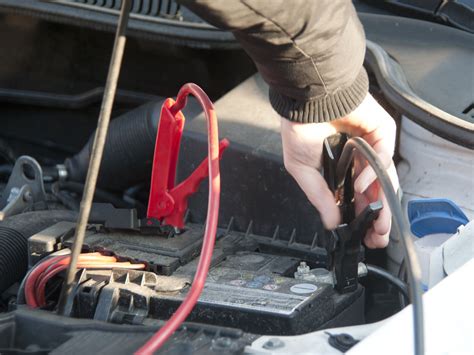Fix Your Car Battery: The Ultimate Charging System Guide
A dead car battery can be incredibly inconvenient, leaving you stranded and disrupting your plans. Understanding your car's charging system is key to preventing this frustrating situation and ensuring your vehicle remains reliable. This comprehensive guide will walk you through diagnosing battery problems, understanding the charging system's components, and implementing effective solutions to keep your battery healthy.
What are the Common Signs of a Bad Car Battery?
Before diving into solutions, it's crucial to identify the problem. Several symptoms indicate a failing car battery or charging system issue:
- Slow engine crank: A sluggish engine start is a classic sign of a weak battery.
- Dim headlights: If your headlights are noticeably dimmer than usual, your battery may not be holding a sufficient charge.
- Clicking sound when turning the key: This often means the battery doesn't have enough power to turn the starter motor.
- Dashboard warning lights: Many vehicles have a battery or charging system warning light on the dashboard. If it illuminates, it's a clear indication of a problem.
- Battery swelling or corrosion: Physical signs like a bulging battery case or white, crusty buildup on the terminals signal potential issues.
How Does a Car's Charging System Work?
Your car's charging system is a sophisticated network of components working together to maintain battery health. Understanding these parts is essential for effective troubleshooting:
- Battery: This stores electrical energy and provides the initial power to start your engine.
- Alternator: This is the heart of the charging system, generating electricity while the engine is running. It replenishes the battery's charge.
- Voltage Regulator: This controls the alternator's output, ensuring it provides the correct voltage to the battery.
- Battery Cables: These connect the battery to the starter motor and the alternator, completing the electrical circuit.
- Starter Motor: This uses battery power to crank the engine and get it running.
How to Charge a Car Battery?
Charging a car battery is a relatively straightforward process, but safety precautions are paramount. Always refer to your car's owner's manual for specific instructions.
Method 1: Using a Battery Charger:
- Disconnect the battery terminals: This prevents accidental short circuits.
- Connect the charger clamps: Ensure the positive (+) clamp is connected to the positive terminal and the negative (-) clamp to the negative terminal.
- Set the charger to the correct amperage: This will depend on your battery's size and the charger's capabilities. Consult your charger's manual for guidance.
- Charge the battery: Allow the battery to charge for the recommended time. This usually varies depending on the battery's state of charge.
- Reconnect the battery terminals: Once charging is complete, carefully reconnect the terminals.
Method 2: Jump Starting:
This is a temporary solution for a dead battery and requires another vehicle with a working battery.
- Ensure safety: Turn off both vehicles' ignitions.
- Connect the jumper cables: Connect the positive (+) clamp to the positive terminal of both batteries. Then, connect the negative (-) clamp to the negative terminal of the good battery, and the other negative clamp to an unpainted metal surface on the dead battery's vehicle (away from the battery itself).
- Start the working vehicle: Let it run for a few minutes.
- Attempt to start the dead vehicle: If it starts, disconnect the cables in reverse order.
What if My Car Battery Keeps Dying?
If your battery continues to die, the problem likely lies beyond the battery itself. It could be an issue with the alternator, voltage regulator, or even a parasitic drain (a continuous current draw when the vehicle is off). In this case, professional diagnosis is recommended. A mechanic can test the charging system components and identify the root cause.
How Can I Prevent Car Battery Problems?
Regular maintenance is key to preventing premature battery failure.
- Regularly check the battery terminals: Clean any corrosion with a wire brush and baking soda solution.
- Check the battery fluid level (if applicable): Ensure the fluid is within the recommended level.
- Avoid short trips: Extended periods of low-speed driving may not allow the alternator to fully charge the battery.
- Get your charging system tested periodically: This proactive approach will help identify issues early.
How Long Does a Car Battery Typically Last?
The lifespan of a car battery typically ranges from three to five years, depending on factors like usage, climate, and maintenance.
What Causes a Car Battery to Die Overnight?
A battery dying overnight is often indicative of a parasitic drain. This means an electrical component is drawing power even when the car is turned off. This can be caused by a faulty accessory, a malfunctioning alarm system, or a short circuit.
What are the Signs of a Bad Alternator?
A failing alternator will often result in the battery warning light illuminating, dimming headlights, and the battery consistently losing charge even after driving for extended periods.
By understanding your car's charging system and implementing these preventative measures, you can significantly extend your battery's life and avoid the inconvenience of a dead battery. Remember, addressing any charging system issues promptly is crucial for maintaining your vehicle's reliability.

